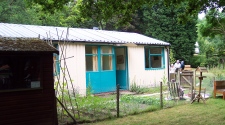If you’re interested in working in health, it’s well worth understanding the full nature and scope of the NHS. There are lots of different skills needed by it, and patients with lots of different needs. What this means is, you might not necessarily have to commit to the decade long training process to become a fully qualified doctor or nurse. There is huge demand, both in public health and privately, for what is known as allied health roles. These support the direct treatment of wounds, disability and disease by doctors and nurses, by helping with rehabilitation, pain relief and adapting to life with some diminished capacities. From Physiotherapists to people in Occupational Therapy jobs, the Allied Health field is broad as well as deep and today we’re diving into it.
Different Skills
There are fourteen separate jobs and disciplines that make up the Allied Health field:
- Art Therapy
- Drama Therapy
- Music Therapy
These disciplines use creative outlets to provide a means to explore and communicate emotional and psychological issues, a key part of the healing process that also helps people engage more fully with physical treatments, drug regimes and the exercise needed to heal.
- Chiropodists/Podiatrists
- Osteopaths
- Prosthetists/Orthotists
All provide specialist support relating different parts of the body or specific issues – from feet to back and even limb loss.
- Dieticians
- Physiotherapists
- Occupations Therapists
- Speech and Language Therapists
Provide a more total approach to support, helping to change or adapt fundamental aspects of the patient’s life to their condition to either aid recovery or maximise their independence and quality of life.
- Paramedics
- Radiographers
- Operating Department Practitioners
All these specialists work much more closely with the apparatus of a hospital: they are first responders, diagnosticians and experts in providing care throughout the experience patients have of the operation process, from preparation and anaesthesia to monitoring their immediate recovery and assessing their readiness to be returned to the ward.
Communication
The key to Allied Health roles working together is communication: it requires the coordination of a large number of different professionals, first to simply assess the needs of the patient, and then come up with a treatment plan that supports both their immediate needs and their long term rehabilitation, from rebuilding strength in the affected area to adapting their homes with accessories like grab-bars in the bath and shower to ensure they can safely return home and live as full and independent a life as possible.
















